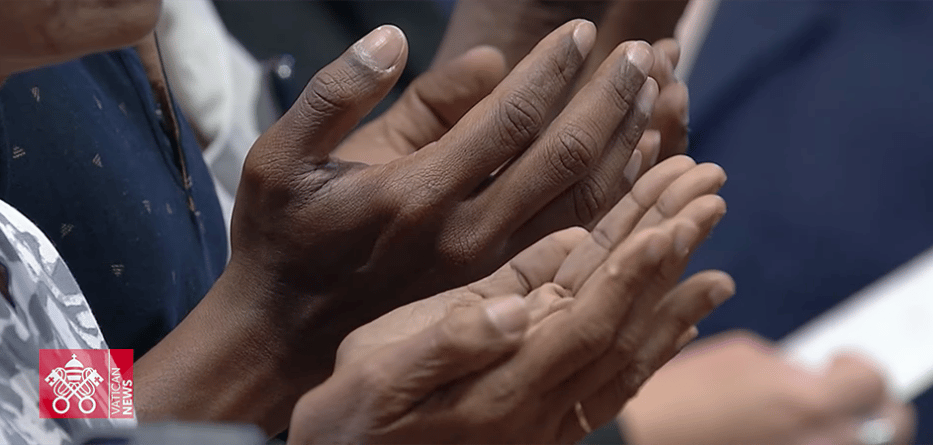Several summers of my 20s were dominated by long hours behind the plate calling balls and strikes for 13 year-old “pony league” baseball. The money was decent, but it was a pretty thankless job, and even back then the worst part of it was dealing with parents who thought one of my calls might keep their kid from becoming the next Bo Jackson or Don Mattingly.
And I did, like all umpires, blow calls from time to time. After a pitch that was very clearly a strike I would sometimes, for no clear reason, simply freeze up and call it a ball. Or in the final inning of a blowout game, my strike-zone would suddenly get larger, likely as a way of refusing to delay the inevitable.
More often than blow a call, however, I would struggle with a pitch that was not clearly a ball or a strike. Some pitches, for instance, were not clearly on or off the corner of the plate. Some were not clearly at or below the knees.
The fancy academic word for this, particularly for those attracted to philosophy rising out of continental Europe is “undecidability.” Most things in this world, such thinkers argue, do not and cannot conform to a strict “binary” where a thing is either X or Y.
Baseball pitches are just such a thing. Though as an umpire I was forced to put every pitch into the category, strictly-speaking there were pitches that were “undecidable” given the binary options I was forced to work with. That is, there were pitches which were both a ball and a strike—or neither a ball nor a strike.
But you don’t need to be a pointy-headed academic to agree that skepticism of strict, lazy binaries is warranted. We have everyday words and concepts designed to name this very thing. Some may think, for instance, of day/night as a binary—but the concept of “dusk” breaks it up. Dusk is neither day nor night. Or both day and night.
And what about our culture’s stubborn obsession with zombies and other undead? The word “undead” itself breaks up the life/death binary. Zombies are neither alive nor dead. Or both alive and dead.
And there are many non-trivial examples of strict, lazy binaries which ought to be broken up and resisted. The religious/secular binary, for instance, has been used by both people who identify as religious and those who identify as secular as a way of marginalizing their opponents.
Someone like Ben Carson or Ted Cruz can’t speak without their holding up “the secular” as an evil boogeyman; while at the same time the gatekeepers of our public discourse force “religious” people to translate their ideas into a foreign “secular” language as a requirement for their participation.
But the best scholarship on religion and its relationship with “the secular” now demonstrates that this binary is broken by all kinds of examples. Is Buddhism a religion? Many strands don’t have a belief in a personal god, but most are inclined to say that it is. Is Gaia environmentalism a religion? Most are inclined to say it is not, but because it has a very clear understanding of the transcendent-based principles of faith for which there are no arguments, it is not clear why it wouldn’t count.
And once you open those floodgates, it becomes unclear why Marxism and even utilitarianism would not count as kinds of religion.
I’ve spent a lot of time writing about how the life/choice binary in the abortion debate is also deeply inaccurate and damaging to our public discourse. Over 70 percent of Americans want abortion broadly restricted after week 12, a policy change that would be seen by most pro-choice activists as catastrophic.
But over 60 percent of Americans want abortion broadly legal before week 12, a policy that most pro-life activists would see as capitulating to state-sanctioned murder. The average American breaks up the life/choice binary. They are neither pro-choice nor pro-life—or both pro-choice and pro-life.
Either way, the idea that somehow there is only side X or side Y in the abortion debate is ridiculous.
But perhaps the most obvious example of an inaccurate and damaging binary comes from a brief glance at the 2016 presidential election cycle. Newt Gingrich, speaking at the Republican convention, tried to smooth over Ted Cruz’s exhortation for all of us to “vote our consciences” by saying the following:
Ted Cruz said you can vote your conscience for anyone who will uphold the Constitution. In this election, there is only one candidate who will uphold the Constitution. So to paraphrase Ted Cruz, if you want to protect the Constitution of United States, the only possible candidate this fall is the Trump-Pence Republican ticket.
Especially given that many people believe Trump has no interest in protecting the Constitution, this is an absurd claim. There are plenty of other possible candidates. Millions if you write-in a candidate.
American politics has been trapped in a liberal/conservative binary long enough. This is the perfect election cycle to send a message that we will not choose between two candidates who do not share our fundamental values. Between two candidates who are deeply dishonest. Between two candidates who have shown they will put personal ambition ahead of the common good. Between two candidates with multiple views deeply at odds with the heart of Catholic teaching.
Our lazy political binary has run its course. The time has come for authenticity.
Charles C. Camosy is Associate Professor of Theological and Social Ethics at Fordham University


















